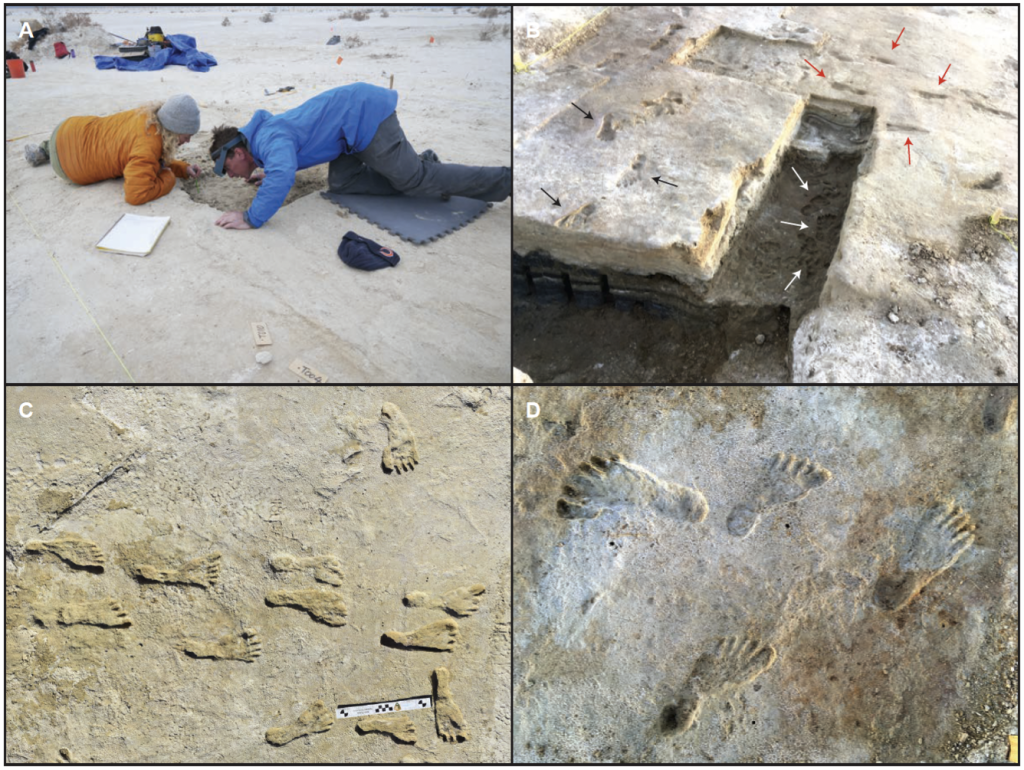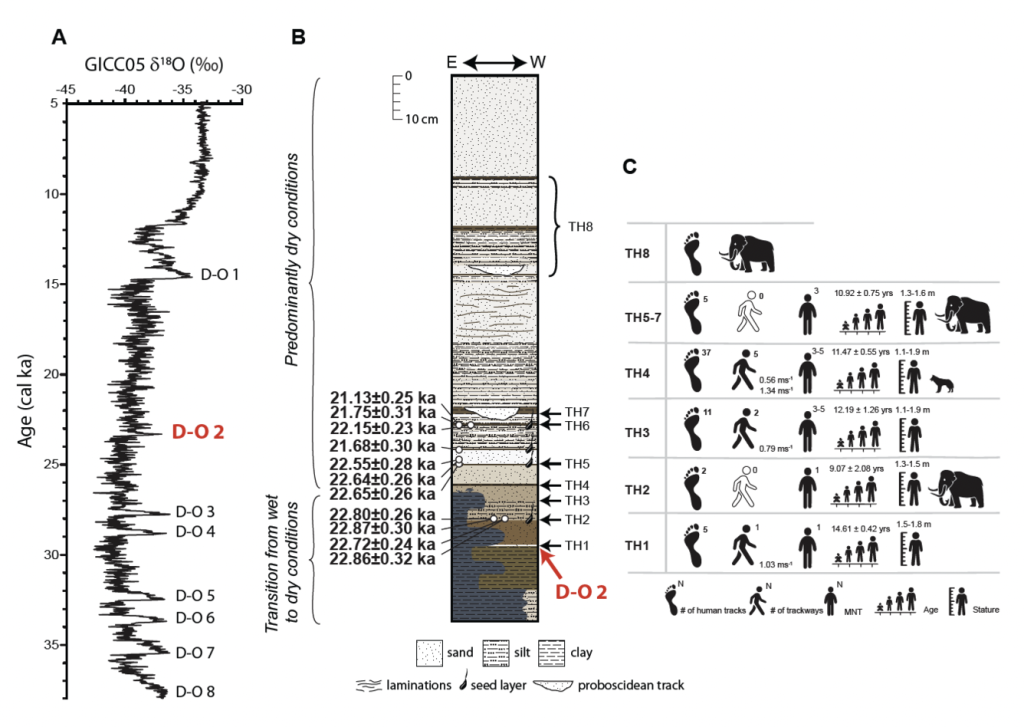A fascinating archaeological revelation emerged in 2021 when a multidisciplinary team of scientists uncovered the oldest human footprints in North America. These remarkable fossilized prints, dating back 23,000 to 21,000 years ago, were found along the ancient shores of a glacial lake that once graced the Tularosa Basin in south-central New Mexico. Today, this historic site is known as White Sands National Park. This groundbreaking discovery has significant implications for our understanding of North American human habitation, rewriting the timeline of human arrival in the Americas by nearly 10,000 years. In this article, we delve into the intriguing circumstances of this extraordinary find, explore the factors that contributed to the preservation and discovery of these ancient footprints, and uncover the identity of those who left this ancient trail.
The Ancient Lake and its Impactful Events

During the late Pleistocene era, which spanned from approximately 129,000 to 11,700 years ago, glacial conditions in the southwestern United States were occasionally interrupted by dramatic warming events known as Dansgaard-Oeschger, or D-O events. These events triggered centuries-long megadroughts, causing devastating consequences for the spring ecosystems, lake levels, sea-surface temperatures, circulation patterns, and even seismic activity in the region. One such significant event, D-O 2, occurred around 23,500 years ago, leaving a lasting impact on the spring ecosystems, as water tables never returned to their previous levels.
A Window into the Past: The Discovery of Footprints
During the peak of D-O 2, the Tularosa Basin experienced a considerable drop in lake levels, revealing an expansive lake margin. It was during this time that both humans and megafauna roamed across the patchwork of wet and dry grounds, leaving behind a trail of footprints and trackways that were subsequently preserved in multiple sediment layers over the millennia.

The team of scientists, dedicated to studying these ancient trackways in White Sands National Park, carefully excavated a total of 61 footprints, revealing that a majority of them were imprints of teenagers and children. The prevailing hypothesis suggests that adults engaged in skilled tasks near the lake edge, while the responsibility of ‘fetching and carrying’ was delegated to teenagers, who consequently left more footprints. Additionally, the presence of footprints made by small children indicates that they might have joyfully played around the lake during this ancient time.
Unraveling the Age of the Footprints
Determining the age of these human footprints was a critical aspect of the study. By fortuitously discovering seed layers of the aquatic plant Ruppia cirrhosa (ditch grass) bracketing the footprint horizons within the sedimentary layers, researchers were able to use radiocarbon dating to estimate the age of the footprints. The results revealed that these intriguing human marks dated back approximately 23,000 to 21,000 years ago.
Addressing Radiocarbon Dating Challenges
Radiocarbon dating of water-dwelling plants and animals can be complicated due to the possibility of “old carbon” uptake from the water, potentially leading to age discrepancies. This phenomenon, known as “the hard-water effect,” had to be carefully considered in the study. USGS scientists meticulously explored multiple lines of geologic, hydrologic, stratigraphic, and independent chronologic evidence to ascertain whether significant hard-water effects influenced the age determination. Fortunately, their thorough analysis confirmed that there were no substantial hard-water effects present in this ancient ice age lake, ensuring the accuracy and robustness of the age results.
A Glimpse into the Past: Humans During the Last Glacial Maximum
The discovery of these ancient footprints, preserved through an abrupt climatic event, provides substantial evidence that humans inhabited North America for nearly two thousand years during the Last Glacial Maximum (LGM), which occurred approximately 26,500 to 19,000 years ago. These findings add significant weight to the notion of early human colonization in the Americas and extend the temporal range of human coexistence alongside Pleistocene megafauna.
Conclusion
The discovery of ancient human footprints in White Sands National Park stands as a testament to the resilience and adaptability of early human populations during a challenging period of Earth’s history. The fossilized imprints, dating back over 20,000 years, offer a unique glimpse into the lives of those who once roamed the Tularosa Basin and underscore the importance of protecting and studying our planet’s rich archaeological heritage.



